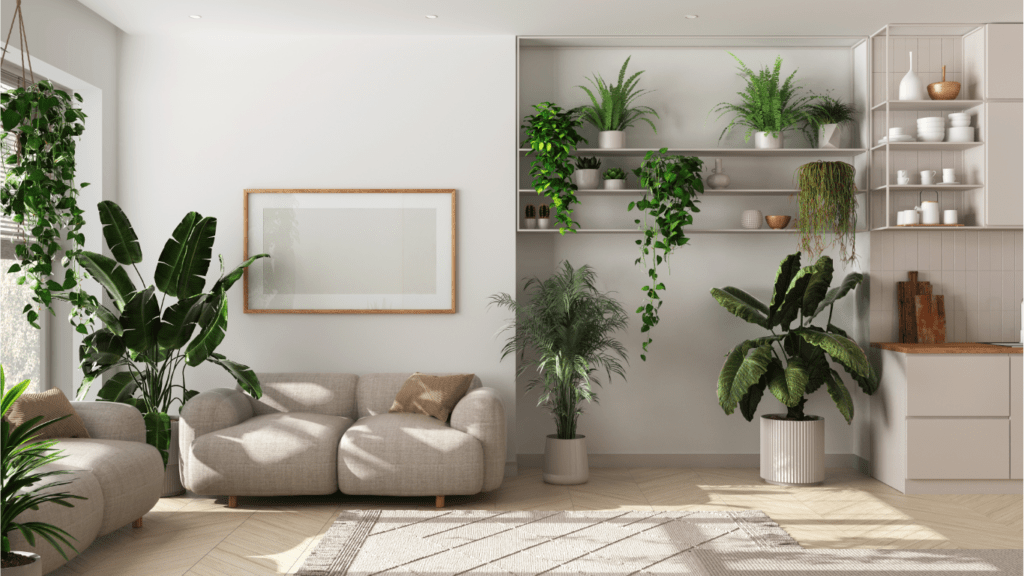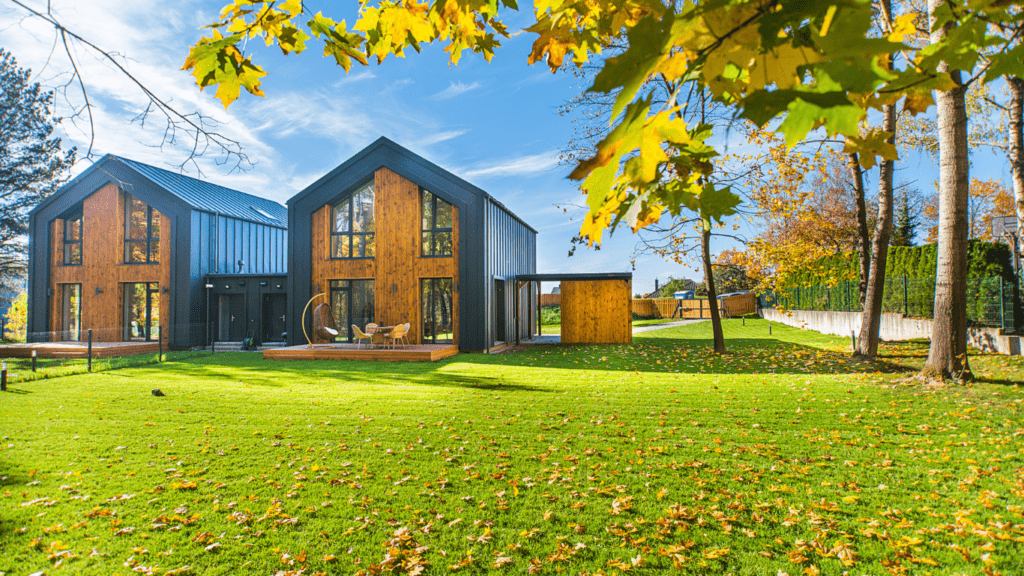Understanding the Benefits of Nature Indoors
Nature induces a positive impact on mental health. Studies show that exposure to greenery can reduce stress, lower blood pressure, and enhance overall well-being. Incorporating natural elements in indoor spaces replicates these benefits.
Indoor plants filter air. They remove toxins like benzene, formaldehyde, and trichloroethylene, improving air quality. Cleaner air leads to better respiratory health and fewer allergies.
Natural light is vital for well-being. Increasing daylight exposure indoors regulates circadian rhythms, improving sleep quality. Enhanced sleep boosts productivity and mood.
Nature indoors stimulates creativity. Workspaces with natural elements see higher levels of innovation and problem-solving skills. Employees feel more relaxed and focused.
Connecting with nature improves mood. Elements like water features or natural scents can reduce anxiety and enhance relaxation. People’s spirits lift when they feel connected to the natural environment.
Wood and stone decor adds aesthetic and practical benefits. These materials provide a calming ambiance and are durable. They also contribute to a warm, inviting atmosphere.
Reducing noise pollution is crucial for mental health. Plants and natural materials absorb sound, creating a quieter environment. Lower noise levels improve concentration and reduce stress.
Choosing the Right Plants
Selecting the right plants can enhance the benefits of bringing nature indoors. Opt for species that align with your space and lifestyle for a flourishing green environment.
Low-Maintenance Options
Choosing low-maintenance options simplifies plant care and maximizes their wellness benefits. Snake plants, for instance, require minimal water and thrive in indirect light. Succulents, like jade plants, store water in their leaves, making them ideal for dry indoor conditions. ZZ plants handle low-light environments well, proving resilient even with infrequent watering.
Air-Purifying Plants
Incorporating air-purifying plants boosts indoor air quality by filtering harmful toxins. Spider plants effectively remove formaldehyde and xylene from the air. Peace lilies neutralize various toxins, including ammonia, benzene, and trichloroethylene. Boston ferns excel at adding humidity while removing pollutants, beneficial for dry climates.
Integrating Natural Elements

Bringing natural elements inside can transform living spaces into wellness havens. This section delves into incorporating wood, stone, and water features to enhance indoor environments.
Wood and Stone
Using wood and stone in interior design channels a sense of calm and connection to nature. Hardwood floors, wooden furniture, and stone countertops offer durability and timeless beauty. In my experience, reclaimed wood adds a rustic charm and sustainability to any room. Here are some ways to integrate wood and stone:
- Furniture: Wooden tables, chairs, and shelves create a cohesive, nature-inspired look.
- Flooring: Hardwood or stone tiles provide longevity and a natural feel underfoot.
- Decor: Stone sculptures, wooden bowls, and stone vases contribute organic textures.
Water Features
Water features add tranquility to indoor spaces by generating soothing sounds and visual appeal. They can range from simple tabletop fountains to intricate indoor waterfalls. I find that adding a water feature creates a focal point while promoting relaxation. Consider these options for integrating water features:
- Tabletop Fountains: Small fountains fit easily on desks or end tables, providing gentle, calming soundscapes.
- Indoor Waterfalls: Larger installations make bold statements in foyers or living rooms.
- Aquariums: Fish tanks add dynamic movement and a touch of underwater nature.
Using these natural elements effectively enhances rooms and contributes to a wellness-boosting environment.
Maximizing Natural Light
Maximizing natural light can transform a space, making it more vibrant and uplifting. Natural light is crucial for maintaining circadian rhythms and boosting well-being.
Window Treatments
- Selecting the right window treatments enhances natural light.
- Recommend using sheer curtains or blinds.
- Sheer curtains diffuse light, creating a soft ambiance without blocking it.
- Blinds, especially in lighter colors, allow you to control the amount of light while maintaining privacy.
- Opaque options, such as heavy drapes or dark-colored blinds, can block too much light.
So, they’re less ideal for maximizing brightness. Utilizing tiebacks or curtain rods that extend beyond the window frame can also ensure that windows are entirely uncovered when treatments are drawn back.
Mirrors and Reflective Surfaces
Mirrors and reflective surfaces distribute light throughout a room. I find that placing mirrors opposite or adjacent to windows amplifies light exposure. Decorative mirrors or mirrored furniture can serve this purpose, blending function with aesthetics. Reflective surfaces like glass table tops or metallic accents can also help bounce light, creating a brighter atmosphere. In smaller rooms or spaces with limited windows, strategically placing reflective decor significantly impacts the overall light distribution.
Incorporating these techniques can enhance your indoor environment, leveraging natural light for a brighter, more welcoming space.
Incorporating Naturescapes
Incorporating naturescapes into indoor spaces can significantly boost well-being. From artwork to virtual experiences, there are numerous ways to bring the tranquility of nature indoors.
Artwork and Photography
Nature-themed artwork and photography can transform any room. I recommend using large prints of landscapes, forests, or oceans to create focal points that attract attention and calm the mind. Select images with vibrant greens or blues for their known calming effects. Custom framing can add a touch of elegance, making the art pieces even more impactful. Don’t forget to rotate the artwork periodically to keep the space feeling fresh and inspiring.
Virtual Nature Experiences
Virtual nature experiences offer a modern way to benefit from nature indoors. I use apps and screensavers that display high-definition videos of natural landscapes, like flowing rivers or serene forests. Devices like VR headsets can also offer immersive experiences, making you feel like you’re walking through a park without leaving your living room. If you’re focused on sound, playlists featuring birdsong or ocean waves can be played in the background to create a serene atmosphere.
By incorporating naturescapes through diverse mediums, you can enhance your indoor environment, fostering a space conducive to relaxation and well-being.
Creating a Sensory Experience
Incorporating sensory experiences plays a crucial role in boosting well-being indoors. Stimulating multiple senses with nature-inspired elements can create a calming and invigorating environment.
Essential Oils and Natural Scents
Using essential oils and natural scents transforms indoor spaces by engaging the sense of smell. Lavender, eucalyptus, and peppermint oils offer calming and invigorating properties. For example, diffusing lavender oil can reduce stress, while eucalyptus clears the mind. Incorporate these scents through diffusers, candles, or fresh herbs. Essential oils not only enhance the atmosphere but also promote overall comfort and relaxation.
Textures and Materials
Integrating various textures and materials enhances the tactile experience of a space. Use natural fibers like cotton, wool, and linen to create a cozy ambiance. For instance, wool rugs and linen throws bring warmth and comfort. Natural materials like wood and stone add a grounding element. Hardwood floors, wooden furniture, and stone countertops provide durability and beauty. These textures not only appeal visually but also create an engaging and soothing environment.
By considering essential oils and a variety of textures, readers can enhance their indoor spaces, creating a holistic, wellness-boosting environment.



 Mindfulness & Nature Wellness Specialist
Eve Macleod is a certified mindfulness and meditation instructor who has spent years cultivating her passion for connecting wellness practices with the natural world. At Whisper Forest Ways, Eve focuses on guiding readers through techniques that harness the power of nature to promote mental, emotional, and physical well-being. Specializing in forest bathing, nature-based meditation, and eco-therapy, Eve helps readers discover how nature can enhance mindfulness practices and deepen relaxation. She believes that the natural world holds untapped potential for personal healing, stress relief, and spiritual growth, and through her articles and tutorials, she invites everyone to embark on a journey toward a more peaceful and centered life.
Mindfulness & Nature Wellness Specialist
Eve Macleod is a certified mindfulness and meditation instructor who has spent years cultivating her passion for connecting wellness practices with the natural world. At Whisper Forest Ways, Eve focuses on guiding readers through techniques that harness the power of nature to promote mental, emotional, and physical well-being. Specializing in forest bathing, nature-based meditation, and eco-therapy, Eve helps readers discover how nature can enhance mindfulness practices and deepen relaxation. She believes that the natural world holds untapped potential for personal healing, stress relief, and spiritual growth, and through her articles and tutorials, she invites everyone to embark on a journey toward a more peaceful and centered life.
